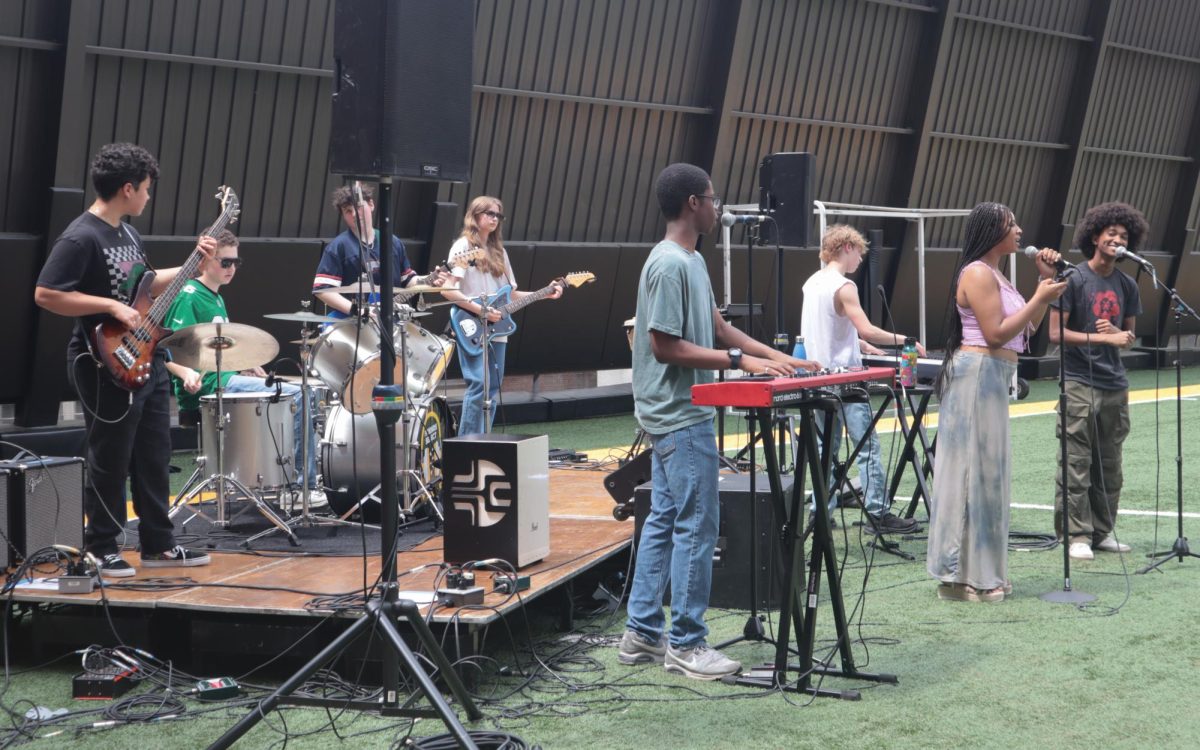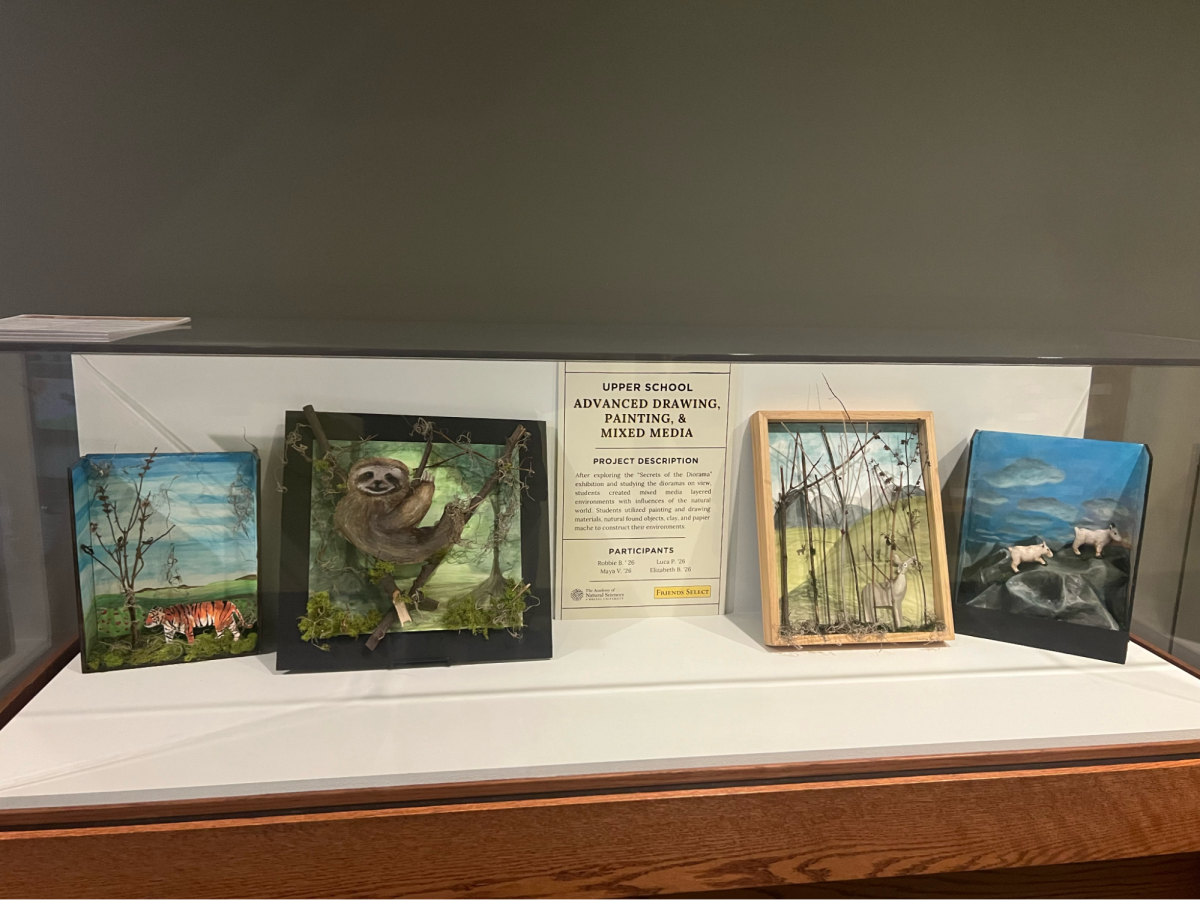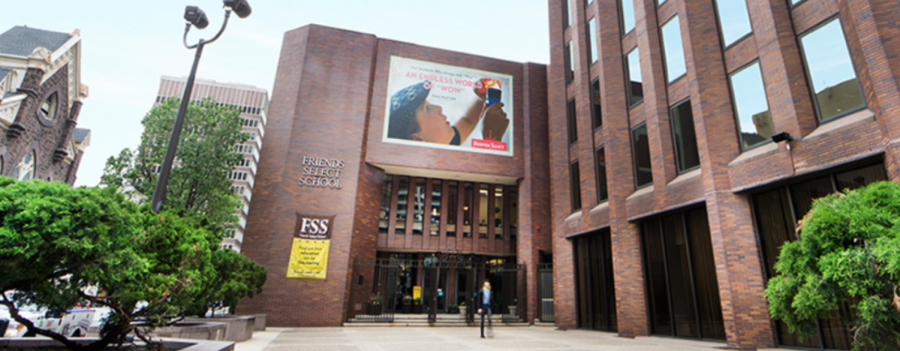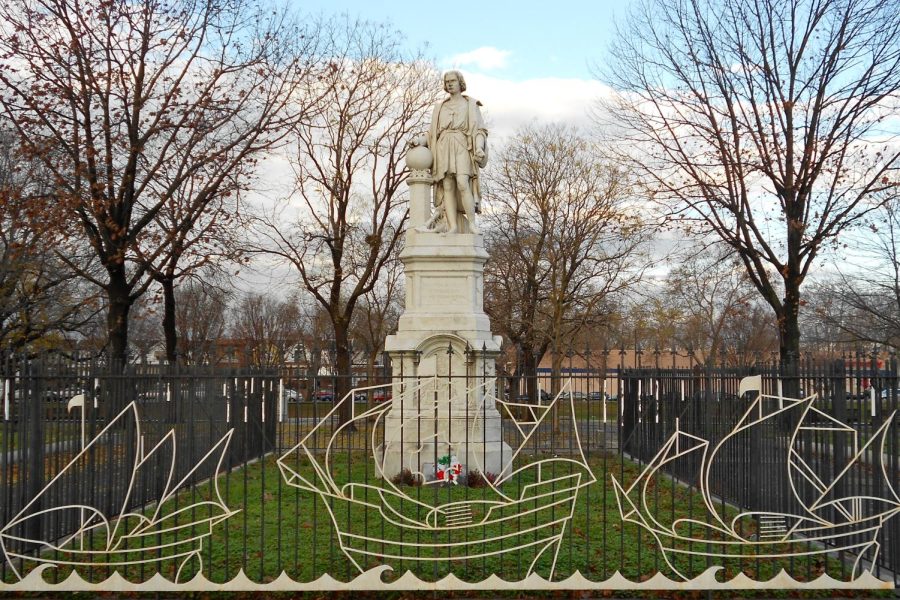Opinion: Icon or Villain? The Conversation on Columbus’ Statue Continues
On October 12th, 1492, Christopher Columbus landed on the ground now known as The Bahamas. Over the course of his stay, numerous Taino people would be exploited, physically assaulted, and killed.
Regardless, the popular tale of his so-called heroic discovery of America has swept through the country for centuries. In 2021, Philadelphia officially changed Columbus Day to Indigenous People’s Day, but Columbus’ legacy in the city lives on through stone sculptures.
Located in Marconi Plaza of South Philadelphia, a statue of Christopher Columbus sits in the middle of a gated square. In 2020, as a response to the George Floyd and racial justice protests, the statue was encased in wooden boards. Mayor Jim Kenney had made a promise to cover the polarizing figure as Columbus’ problematic past had come to light; however, at the time, the city could not finalize the statue’s removal.
But what about Christopher Columbus prompted the statue’s confinement? While Columbus is often taught as an icon for his “discovery” of North America, the true history of his arrival on this continent brings to light the atrocities committed against an indigenous population, the Taino people.
In 1492, Columbus sailed to a region of the Bahamas that was inhabited by the Lucayan, a branch of the Taino people. According to an excerpt from one of Columbus’ journals, he and his men were nicely greeted by the Lucayan people with food and water.
“We understood that they had asked us if we had come from heaven. With 50 men they can all be subjugated and made to do what is required of them,” wrote Columbus.
Before traveling to another nearby island, a number of the Lucayan were kidnapped by the explorers. Once arriving on the island Hispaniola, now Haiti and the Dominican Republic, they proceeded to commit numerous atrocities upon the Taino in the area. Numerous men were killed while raiding the Taino valuables and kidnapping women and children for sexual slavery.
“There are many dealers who go about looking for girls; those from nine to ten are now in demand,” wrote Columbus in his journal.
When the explorers came up empty handed in valuables, they instead resorted to kidnapping 500 additional Taino people to sell into slavery. On their many trips back to Hispaniola, many Taino people died from disease and famine, while the rest died from hypothermia during the journey to Europe, bled out, were hunted down by dogs, or took their own lives.
Regardless of this horrific history, after being boxed up and abandoned for over two years, the statue has been ordered to be unboxed by a Pennsylvania court ruling of December 2022. The question is: after the city took such a strong stance against offensive figures, why are they now reversing their decision?
Pennsylvanian judge, Mary Hannah Leavitt, ruled that, because the city accepted the statue in 1876 during the country’s centennial, the statue must be preserved after being declared a historic object in 2017. While this may be true, it is a misconception that a historical designation protects something, such as a statue, forever and ever. Although often requiring a lengthy legal process, these designations can be reversed.
Just as new historical figures are created every day, public opinion on the old ones changes rapidly over the years. As more information becomes available on the “icons” of the past, we can revisit some of the values that we want to uphold by reevaluating our monuments so that they better reflect our society. If we continue to allow figures like Christopher Columbus to be honored in our city, we are allowing the stain of white supremacy and racism to overshadow our values.
For the past three years, the push for preserving the Columbus statue has been led by the Italian-American population in South Philadelphia. This poses the next question: why would Philadelphians want to fight for the Columbus statue to stay in the first place? The reason goes back to 1892 when President Harrison first created Columbus Day.
In New Orleans, 1891, eleven Italian-Americans were lynched, as at the time they were considered foreigners and non-white. As a response, in the next year, President Harrison created Columbus Day as a way to appeal to the Italian-American population, to ease the anti-Italian violence, and to allow them to assimilate into white mainstream America by considering an Italian man an iconic American figure.
As a result, Columbus became an important symbol for Italian-Americans and for immigration in the U.S. In addition, his statue is also defended by people who choose to defend honoring Columbus by recognizing his accomplishments, specifically his discovery of the Americas, separately from his malicious behaviors. And while many people are beginning to recognize the true history, many others are simply ignoring the facts.
Over 500 years before the birth of Columbus, evidence suggests that Vikings were actually the first Europeans to reach American soil. Furthermore, the existence of the Taino people in North America would’ve made it impossible for Columbus or the Vikings to have discovered the land.
With this history, we know that Columbus’ image in the United States was politically manufactured. We now have to examine and reconcile ourselves with the fact that Columbus has no significant ties to the United States or Italians who currently live in America, and therefore his statue should not be defended for that reason.
Columbus’ indisputable and brutal actions against the Taino people justify the need for his statues and images to be removed in Philadelphia. While many Italian-Americans look up to Columbus as an icon for them, that connection is both historically fabricated and is not enough to undo the hurt that he has caused for the Indigenous population. His image predominantly accomplishes sending a message of hate and advances the rampant threat of white supremacy.























